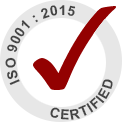SES
Low Viscosity
Silicone Elastomer for Semiconductors
Protective coating designed to stabilize semiconductor junctions and surfaces for use in device technology of diodes, rectifiers, transistors and integrated circuits – also for thin film and hybrid microelectronics circuits.
FEATURES
- Permits –60 °C. to 250 °C. continuous operation
- High voltage capability 1000 volts
- Electrical stabilization-minimize leakage current and control surface effects
- Good high frequency characteristics
- Mechanical stabilization against shock, vibration, acceleration
- Protection against weld flash and contamination
- Compatible with epoxy encapsulation
- Simple and economical to use
SES® Silicone Elastomer for Semiconductors
DESCRIPTION OF SES
SES is a thick, white liquid processed from a highly purified special siloxane derivative, which is partially condensed and polymerized. It is ready to use with addition of a trace of catalyst to produce the solid silicone elastomer with excellent electrical and physical properties. Its chemical formula shows covalent bonding of all elements without free dangling valence bonds and in general a non-polar molecular structure.
CHEMICAL STRUCTURE OF SES
SES adheres or bonds to silicon, germanium, glass, and metals. It provides a lasting, neutral, protective coating for semiconductor junctions and surfaces. The uncured SES has a storage life in excess of 5 months. Typical viscosity is 10,000 cps for the uncatalyzed products; customized viscosities ranging from 7,500 to 14,000 cps are also available.
PROPERTIES OF CURED SES
| Color | White |
| Flexibility | -60 °C. to 250 °C. |
| Heat Resistance | Up to 300 °C. |
| Specific Gravity | 1.2 |
| Resistivity | 1 x 1015 ohm-cm. |
| Dielectric Constant | 3.5 (1mc.) |
| Dielectric Strength | 850 volts/mil |
| Dissipation Factor | 5 x 10-3 (1 mc.) |
| Thermal Conductivity | BTU-ft/ft2-hr-°F |
| Durometer Shore A | 45 |
| Coefficient of Thermal Expansion | 14.1 x 10-5 in/in °F (0-350°F) |
APPLICATION OF SES
SES is simple to use and requires an air drying oven (200 °C.) for equipment. SES should first be thoroughly mixed with catalyst provided (0.25%) or less; this mixture has a useful potlife of about 5 hours. Application is made by transfer or dipping, with the coated semiconductor devices gradually heated or the temperature raised in steps to 200 °C. Vacuum heat treatment may also be used. The coated devices can be stored in the oven until packaged. Uncured material can be removed with xylene as a solvent; cured material requires commercial strippers.

